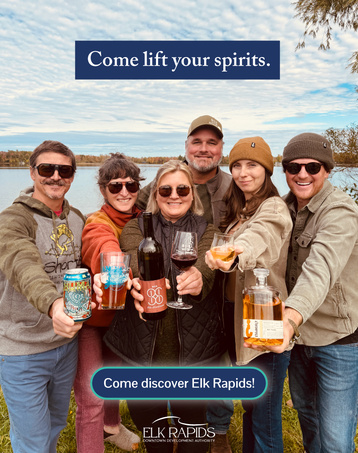
Dispatch From The Dunes #6: Soak It Up
By Julie Den Uyl | Aug. 5, 2022
Sleeping Bear Dunes National Lakeshore (SBDNL) is on full summer display, and Sleeping Bear Tour Co.'s Julie Den Uyl, who leads wilderness hikes in the park, shares a zoomed-in look at what you’ll experience if you slow down and immerse in the spectacle.
Calling All Birders: Migrations have begun. Many Great Lakes Piping Plovers have departed the breeding grounds and returned to their winter habitats. Soon this year’s fledglings will follow. For a last opportunity to enjoy the antics of this year’s brood’s head to the lakeshore for a glimpse of the young preparing for their journey south.
Blue herons, sand hill cranes, and trumpeter swans have enjoyed a stellar summer. Watch for cranes and swans near the Dune Climb and herons at Sleeping Bear Point. One common and often vocal resident of the hardwood forest is the ovenbird, whose name derives from the leaf-covered dome nests it erects on the forests floor, resembling an old-fashion outdoor oven. Synonymous with a northern Michigan woods, the ovenbird is one to listen for.
If you are interested in identifying songbirds encountered on any outdoor adventure, I highly recommend placing the Cornell Lab, Merlin bird app onto your phone. It’s a total game changer.
Vital Plants: Bright yellow sunflowers are rising in the fields, berries are ripening, and cattail seedheads are maturing. Most humans today don’t give cattails a second thought. For the Anishinaabe, cattails were a multi-use staple of life. Roots are ground for flour, the sticky sap between leaves provides starch to thicken soups, and the base of the leaf is eaten in salads. Cattail pollen is a hemostatic and astringent. Leaves and stalks were sewn together creating an important insulated barrier on the cold winter ground. Floating decoys were made from folding leaves in shapes of ducks and fluff from cattails was often used to insulate footwear or pad a baby’s cradleboard.
Inspire Curiosity: Nature rewards the slow adventurer. The sharper the movement the less you will discover. Sitting and observing will present a wider variety of wildlife encounters. Water sources are the best places to sit and observe: Your visit will constantly be interrupted with fish surfacing, turtles floating, dragonflies instigating an acrobatic display of flight, otter or mink engaging. Minimizing the area of focus also aids in discovery; no matter the age of the observer. Drop a hula-hoop, jump rope, or dog leash on the ground encircling an area. Closely observe the community of life within the narrowed visual.
Photo courtesy Sleeping Bear Tour Co.
CommentProperty Watch: Bright and Cozy in Maple City
This brand new listing offers a smallish but updated home near Maple City.
"This well-kept 3-bedroom, 2-bath …
Read More >>Amazon Deliveries Provide Small Business Boost in Leelanau County
An online retailing behemoth that’s often criticized for putting the squeeze on small businesses is now providing …
Read More >>From Sugar Loaf To Local Sports, Here's Leelanau County's 2025 By-The-Numbers Breakdown
A federal government shutdown that affected operations at Leelanau County’s most famous tourist attraction. A Suttons Bay-set …
Read More >>Your 6th Annual Leelanau Ticker Fireside Trivia
Another year, another reason to celebrate a county loaded with history and never short on cool stories …
Read More >>



